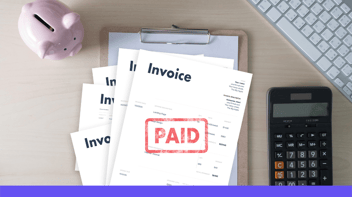Good vs Bad Overtime: What It Is & How to Benchmark It
Read the transcript of this video here.
IN THIS ARTICLE
→ Why does managing overtime matter?
→ Why is it important to distinguish between good and bad overtime?
→ What is good vs bad overtime?
→ Metrics and formula to evaluate overtime quality
→ How to benchmark overtime?
→ From the Founder: "What is Good vs Bad Overtime?"
Understanding Overtime
EXECUTIVE SUMMARY
- Overtime management is not simply about minimising expenses, but understanding whether extra hours propel your business forward or reflect deeper issues.
- To understand whether overtime in your business is good or bad, we use productivity metrics that show much your business generates in revenue or how much it costs your business for every hour your team works.
- ‘Good overtime’ is when your average hourly revenue increases in line with extra hours worked, which contributes positively to business performance.
- ‘Bad overtime’ is when your average hourly cost increases at a greater rate than your revenue, and often indicates underlying inefficiencies.
Why does managing overtime matter?
The concept of overtime can be a double-edged sword. It can either be a strategic tool for managing workload peaks in busy times, or a costly symptom of deeper issues.
When used judiciously, overtime can help businesses manage busy periods without the long-term commitment of hiring more staff. This can be especially useful for manufacturing or wholesale businesses where demand can be seasonal or linked to specific contracts.
Without proper management, however, there are negative implications on your finances and people. Constantly relying on overtime can become expensive due to higher wages. It can also wear out your team, causing more mistakes and lower quality work. Over time, this can impact morale and lead to higher turnover rates, ultimately affecting the culture and operational stability of your business.
Why is it important to distinguish between good and bad overtime?
Not all overtime is created equally. Contrary to popular belief, it's not simply an expense to be avoided at all costs.
Proper overtime management is not about minimising quantity, but maximising quality.
When you understand overtime quality, it allows you to identify inefficiencies (such as team members regularly making errors) and optimise productivity for better business performance.
Metrics and formulas to evaluate overtime quality
To effectively measure the quality of overtime, we use two critical productivity metrics:
- Revenue Per Hour: The average revenue your business generates per hour, and
- Cost Per Hour: The average cost your business incurs per hour.
First, obtain data for a specific period such as daily, weekly, or monthly. You can collect this information from sales reports, employee records or time sheets.
To calculate Revenue Per Hour, divide Total Revenue (the total dollar figure of sales revenue produced) by Total Hours (the total number of labour hours worked).
- Revenue Per Hour = Total Revenue ÷ Total Hours
To calculate Cost Per Hour, it's the same approach but for outgoing costs instead of incoming revenue. Simply divide Total Cost (the total cost of the work being completed) by Total Hours (as per the revenue calculation).
- Cost Per Hour = Total Costs ÷ Total Hours
How to benchmark overtime?
If your people are working more hours which leads to more overtime, naturally you should expect more revenue being produced.
If your business is producing more Revenue Per Hour with increased overtime, that's a good sign the extra hours are contributing to overall productivity and profitability.
But if your average Cost Per Hour has increased at a greater rate than what your revenue has, you’ve got a problem (potentially) with bad overtime.
Key Takeaway: ‘Good overtime’ is when your average hourly revenue increases in line with extra hours worked. ‘Bad overtime’ is when your average hourly cost increases at a greater rate than your revenue.
“What is Good vs Bad Overtime?”

“When it comes to paying overtime in your business, the default is that it’s not a good thing.
However, I want to share with you the concept of good overtime and bad overtime.
How do we work this out? Well, there’s a benchmark we can use for the overall performance of the business to understand whether an overtime is well spent or poorly spent.
Before we go further into that, quite often good and bad overtime can be self-explanatory.
As a leader within your business, if the team is doing things just because they made a mistake here or we were a bit slow there and were pushed to get something out the door... you know that’s bad overtime.
Conversely, if you’ve got an office or factory that’s thriving and pushing out a whole bunch of work, and you’ve got so many opportunities you’ve got to get out the door, and you’re doing it in an efficient manner, then there’s a high probability that’s good overtime in your business.
But the way to ensure the bad things aren’t just gremlins building in your mind, or conversely that you’re looking through the world with rose coloured glasses, is by looking at two metrics.
Firstly, what’s the total hours being worked in your business? And what is the revenue being produced in your business? And dividing those two numbers – revenue at the top, divided by hours worked. That can tell you how much is being produced by the business on an hourly basis.
If you are working more hours, which leads to more overtime, then naturally you should expect more revenue being produced by your business. That will give you the revenue your business generates per hour worked.
If your average hourly cost then has increased at a greater rate than what your revenue has, then you’ve got a problem, potentially, with bad overtime.
The way to calculate that would be the total cost of the work being completed divided by the hours that have been worked (the same number that you’ve used for the revenue calculation).
That way, you can see in your business if the overtime you are doing is good overtime or if it’s bad overtime.
What do you need to do in either of those circumstances?
If it’s good overtime, naturally you keep doing more of the same. Keep pushing that work through the funnel. And maybe if you are doing overtime but it’s still staying up there, consider adding new team members to your business.
Conversely, if it’s bad overtime, you need to get to the root causes to what is leading the overtime. Is it inefficiency of team members? Is it a lack of skill of team members? Is it just a bit of ignorance, people just walking around or doing things slowly?
Lastly, remember the smartest people on the planet are people who potentially get paid overtime with their work. Be wary of the games they play.
In summary, if you find your overtime bill is going up, understand the reasons why, and if it’s on the good side of the equation or the bad side of the equation.”
Learn everything we teach our clients... for free
Join 400+ business owners & leaders who receive practical business & accounting tips, delivered free to your inbox every week. No fluff, just high-level expertise. Sign up now.



